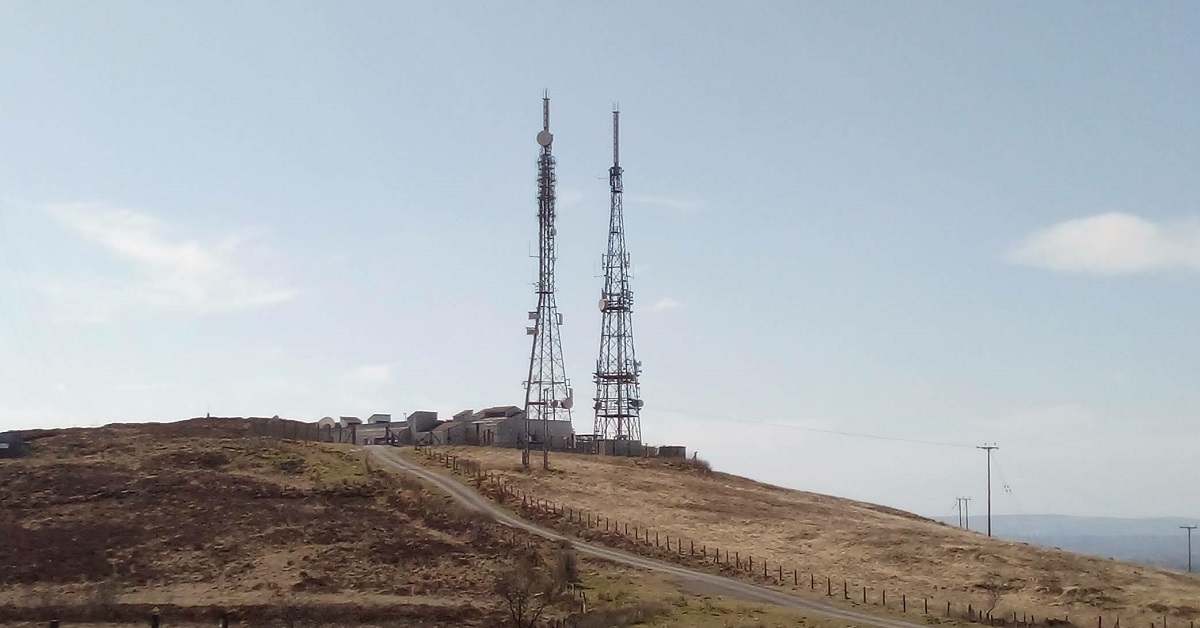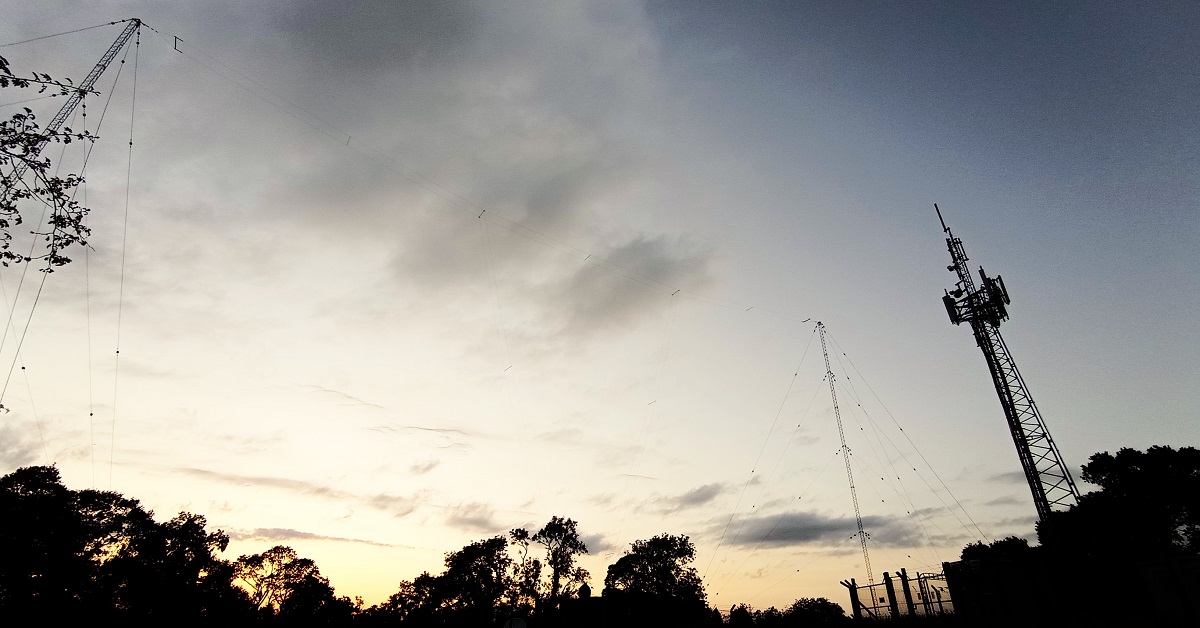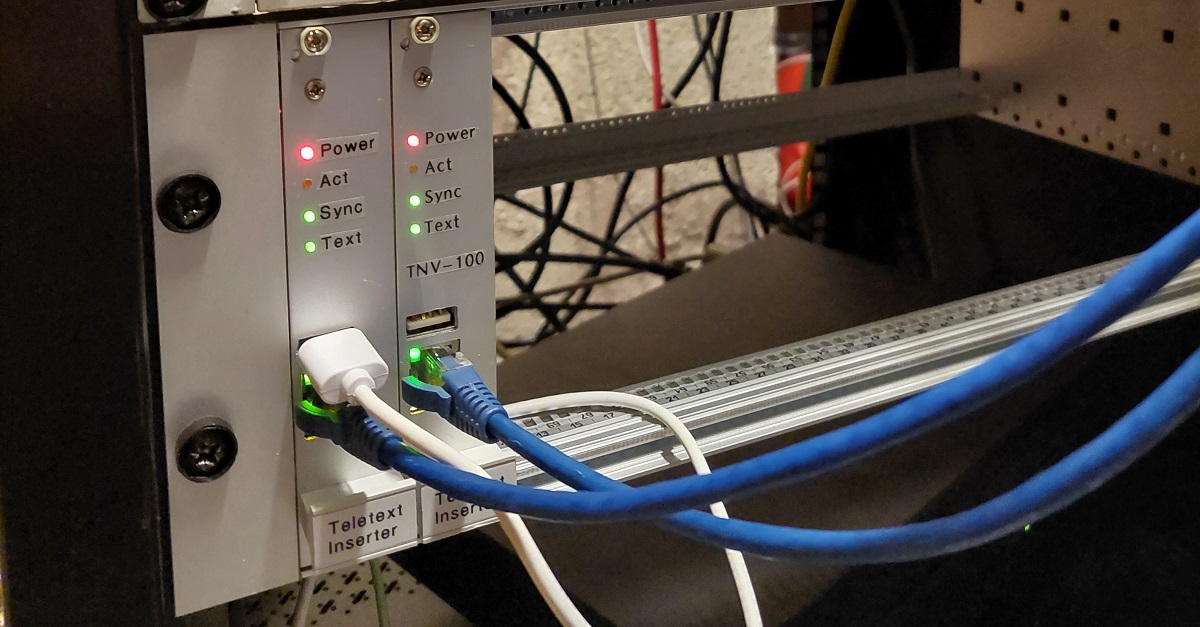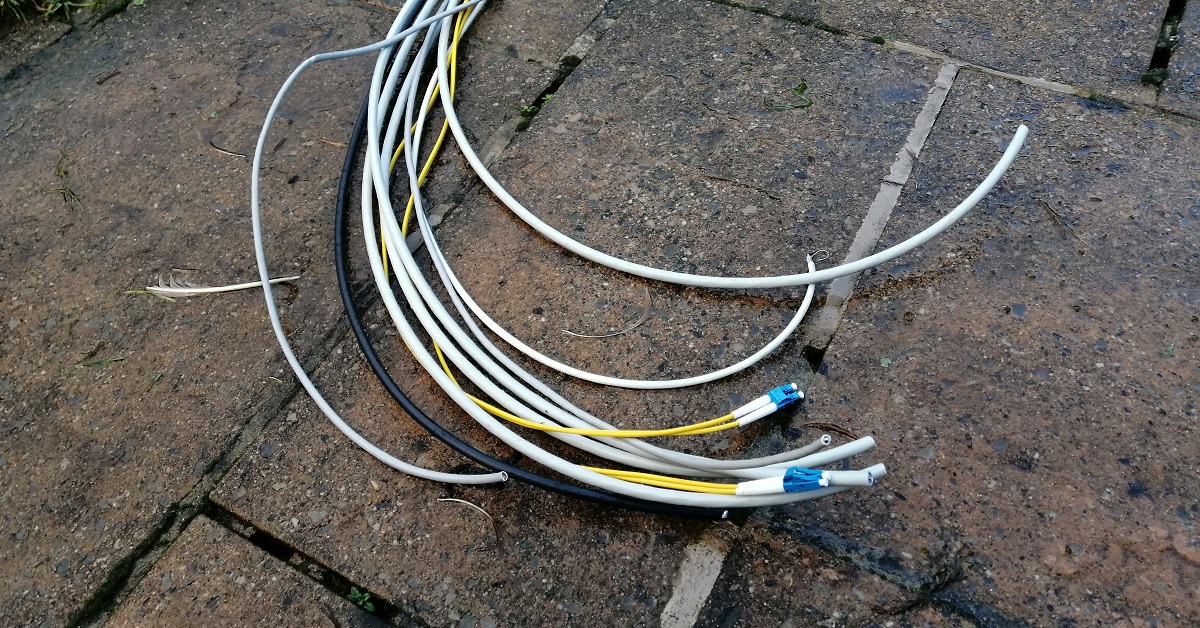Divis Transmitting Station
Situated on the west of Belfast

Map from Google Earth ©, in 2024
For the purposes of this article, we'll include the peak transmitter station, even though it's some distance away from, and in no way related to, the main Arqiva masts - mainly because it's so nearby, and I don't really have enough info on it to warrant a page of it's own. [1] There were actually also two BT microwave sites in this general area as well - Ballygomartin and Standing Stones. However, there is barely any trace of those left, and I'm mostly interested in broadcast stuff anyway.
That said, there are three masts at Divis; two within Arqiva control for DTT (Freeview), DAB, FM, etc, and one that remains from the old Military Comms base. I assume this carries emergency services TETRA and the likes. More discussion on this further down the page.
Originally, there was one BBC mast, and two military masts on the peak; However, Arqiva built a second mast to ease upgrades for DSO [2] DSO: Digital SwitchOver. When we decided to scrap analogue televison to free up spectrum for digital TV and Cellular services. For NI, this happened in 2012, the last place in the UK to do so. , and the military base has since been demolished.
The space around the sites is now managed by the National Trust, and they operate a variety of paths over the mountains. These proved incredibly popular during the 2020 lockdowns[3], somewhat to the dismay of reclusive nerds such as myself!
As one of the paths is also the transmitter access road, it's very easy to get over for a closer look. One can also easily spot the conduits that convey fibre optics and other lines to the transmitters, they even cross a stream above ground at one point. [4] If anyone asks, I didn't tell you this.
Strictly speaking, "Divis", the actual mountain, is the peak on which the smaller government mast is sitauted. The Arqiva masts are actually in a slight dip between "Divis" and "Black Mountain" - and the huge IBA[5] Or ITV, or UTV, whichever you prefer. This one is also Arqiva these days. mast to the south-west is technically beside "Black Hill", not "Black Mountain". I've no idea how this confusing naming came about. Perhaps they were named by planning departments in England with little knowledge of the geography of the area. Anyway...
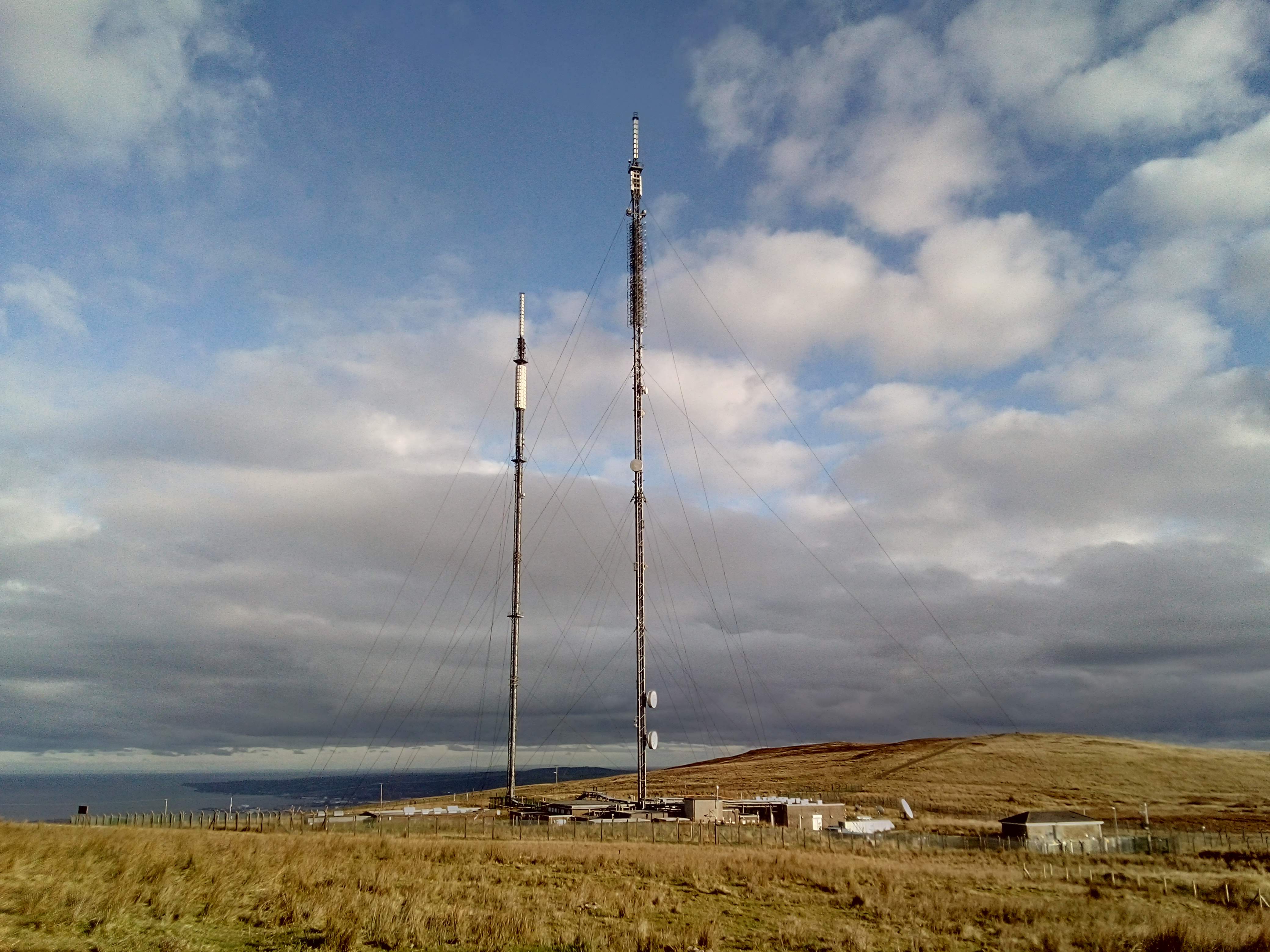
Arqiva masts, as of 2019.
These are the masts that almost certainly bring you TV and Radio if you live in the east of NI - and have done since it was built in 1955, replacing a temporary service from Glencairn[6].
As of 2025, these masts transmit:- Freeview HD - 8 multiplexes - including the local NVTV service and RTE channels on the so-called 'NI Mux'. This began in 1998 as "OnDigital".
- FM Radio - BBC National services (R1-4) plus Radio Ulster and Classic FM. This started in 1956.
- DAB Radio - BBC National, plus the commercial Digital One and Sound Digital ensembles. This began in 1999.
- Analogue VHF TV - BBC1 on C1 (45MHz) at an E.R.P. of only 12kW[7] It amazed me to learn that this was enough to cover almost the entire population of Northern Ireland. One wonders why we didn't try transmitting 625 line, and later Digital TV, on this band.
- Analogue UHF TV - BBC1, 2, UTV and C4. This commenced with BBC2 in 1967, and ceased with DSO in 2012.
The reality is that these masts do, and did, more than just giving you TV though. As a result, this site was designated a "key point" in the 70s, and has lots of extra security measures - it even had a permanent guard for a time.[8] Frontline Ulster have an interesting article on this subject. The existence of "green" and "yellow" keypoints implies the existence of "red" - and I'd be most intrigued to find out what they all were.
The documentation for this decision makes for interesting reading; It states that an attack could result in a loss of transmission for 2-3 days, and restrict transmissions for over a year.
It's worth noting that until DSO in 2012, every TV transmitter, and most BBC radio transmitters in NI, received their feeds either directly or indirectly from Divis. So a failure at the site would have further reaching consequences than you might've thought[9] I've seen some very intriguing documentation on how this all worked in the 90s, and whilst I'd love to share it here it's a bit irrelevent here. Maybe I'll do a dedicated page on this.. This is not so much the case now.[10][Citation Needed]
It was also used as a mid-point for various microwave links. It's difficult for me to narrow down the exact uses for all the dishes visible; However, it seems likely that the two largest dishes towards the base of the mast were pointing at Deadman's hill, part of a link to/from Dublin - there was also a feed to BBC Foyle, via Gortin Forest[11] GF was a midpoint site north of Omagh, and also acted as a remote receive for Brougher Mountain., NICAM receivers[12]The BBC used a digital NICAM system to carry audio for the national FM and MW services. Typically a major FM transmitter would have a full NICAM demux bay, and use short BT 'local ends' to send analogue audio to nearby MW transmitters. Divis typically received NICAM via microwave from BH, and sent it on via microwave to Londonderry - but it seems there was also a reserve microwave feed coming in from somewhere., and two steerable receive dishes for OBs.
I understand in the early days these would have been manually controlled by BBC Transmission staff based at Divis - but they could later be remotely controlled from BH[13]BBC Broadcasting House.
These could then be routed to one of three permanent "contribution" microwave circuits into BH.
I'm led to believe there were UHF/VHF audio comms facilities here too, for TV and radio OBs, but info on those seems to be elusive at the moment.
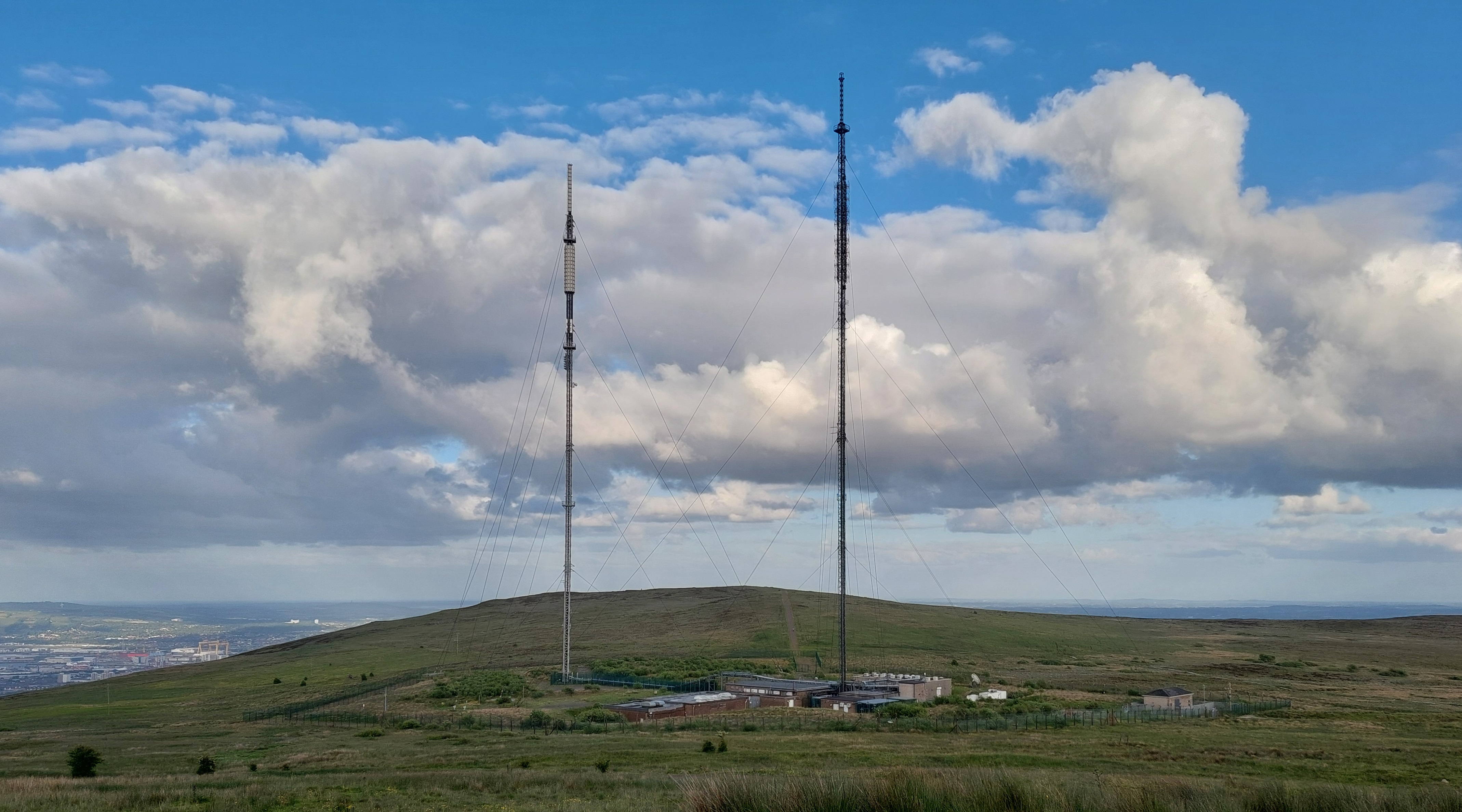
A slightly more recent photo in 2024 reveals that almost all of the equipment has been removed from the original mast. This would suggest to me that perhaps there are plans to completely decommission it in the near future - after all, I believe it is the oldest BBC mast still in operation, with many others replaced for DSO.
It still carries the VHF antennas for BBC FM radio though, which raises the question of where that would go on the second mast. UHF TV antennas take up most of the upper sections there - and with the mast's location in a 'dip' making the height ever more important, moving the VHF bank lower will almost certainly have an appreciable effect on the coverage area.
I recall hearing rumours that making the masts just a few feet taller would have dramatically increased their coverage area - and in fact, that the second mast was intended to be taller - but their proximity to Aldergrove Airport[14]"Belfast International", if you prefer. scuppered that idea. Indeed, if you've been at the site you'll most likely have seen aircraft taking off from Aldergrove overflying the site.
You might just be able to spot a large satellite dish just to the left of the transmitter building. In fact there are three, used for a number of purposes.
These are mostly reserve feeds - there's a reserve for the BBC's national DAB ensemble, and a pre-packaged Freeview multiplex available via DSAT[15]"SATBACK" was most famously used to feed repeaters of Bilsdale after "mother" burned down in 2021..
There was also a reserve feed for analogue TV. Originally, the 'reserve' feed for UHF analogue TV came off-air from Cambret Hill in Scotland - however, in 2009 it ceased transmitting analogue television. Therefore, it seems that the new reserve was effectively two DSAT receivers, set to 14:9 centre cut-out and with no NICAM stereo, plugged into the analogue transmitters. I'm not aware if this was ever pressed into operation or not.
The Government (?) peak site
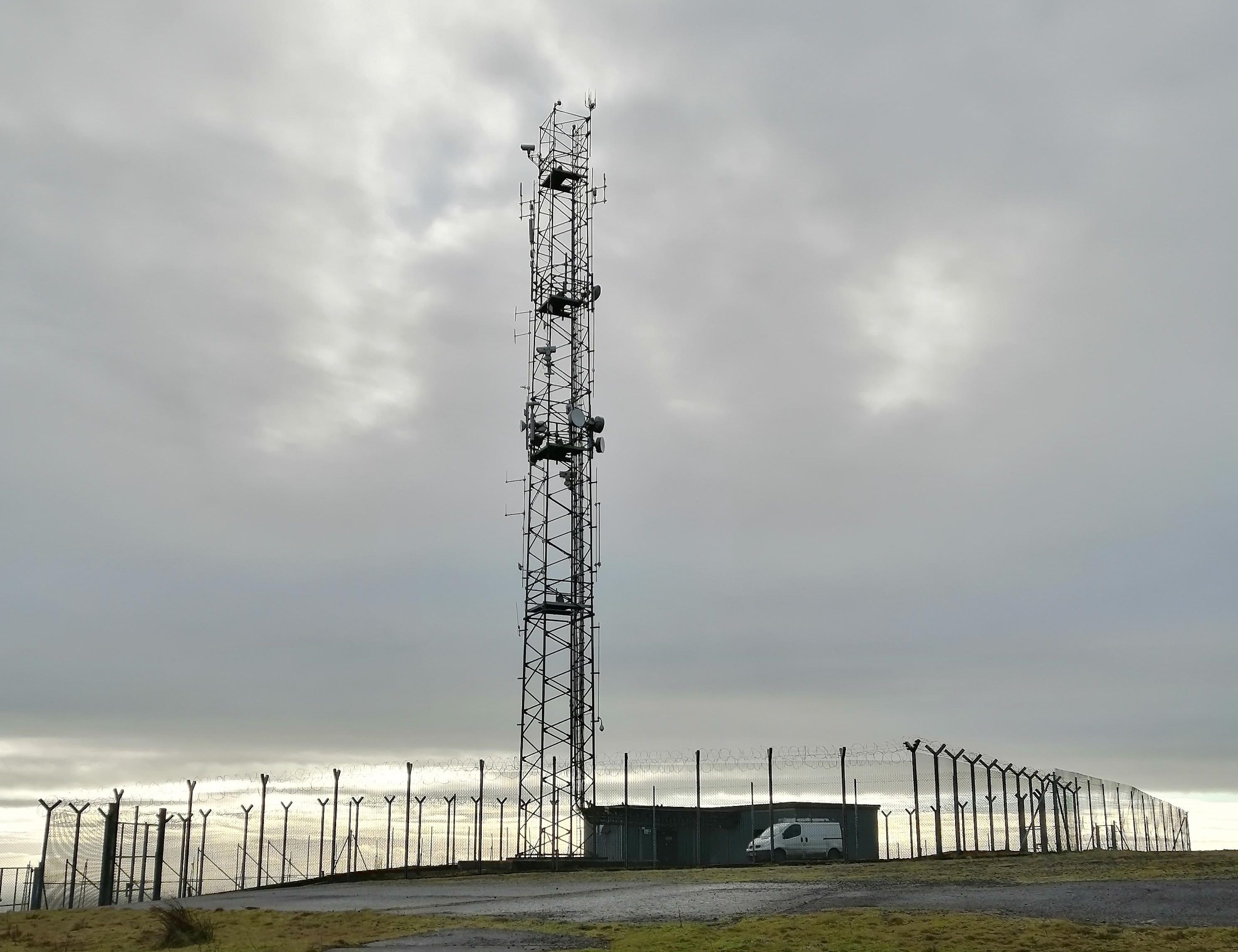
This is what remains of the military comms base. As I've mentioned before, it's not particularly straightforward finding out any useful information about it - but that won't stop me from making a few "educated" guesses.
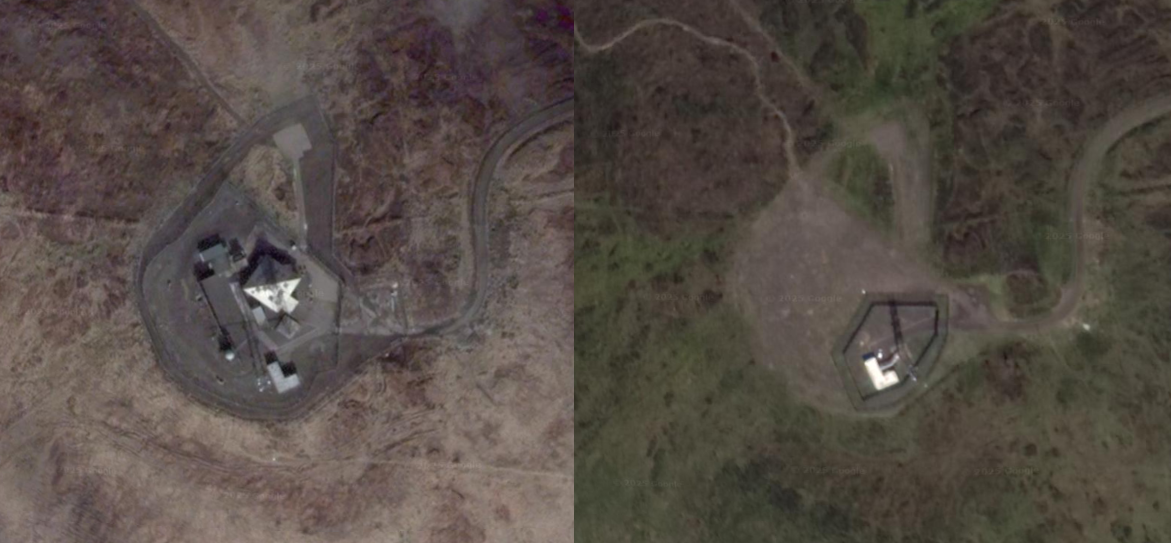
For comparison, these satellite images from Google Earth compare the original military base to what's left today.
Side note, I wondered for quite a while what the empty square of tarmac at the north side may have been for. Start of a new mast or something, perhaps? But no, of course that will have been a Heli pad, to ferry soldiers in and out of the base.
For a start, this is almost certainly a base for the emergency services' TETRA radio systems. Such a high up site would ensure decent coverage for a wide area.
There are quite a few folded dipoles that look VHF - My guess is that these could be for the Coastguard, paging, and similar services.
The microwave dishes are potentially carrying feeds to other TETRA sites within line-of-site. Notably, I can't see any mobile (cellular) antennas - which I think confirms that this is very much government only stuff.
There are a couple of details that I find super intriguing though. The first is what looks like a UHF direction-finding array, right at the top of the tower. Would that perhaps give one a bearing on UHF radios used in the city...?
Secondly, spot the three CCTV cameras looking out over Belfast. Now compare them to the size of the van outside the transmitter hall. And remember they are not only further back, but also further up. Those things are huge - OK they're probably not the newest things in the world, but still. Not to go all 'big brother' on you, but you have to wonder what's visible through those.
If you have info about any of these masts (including the Arqiva ones) - please get in touch, even if (especially if) it's not stuff that can be shared on the web. I'd love to hear more.
